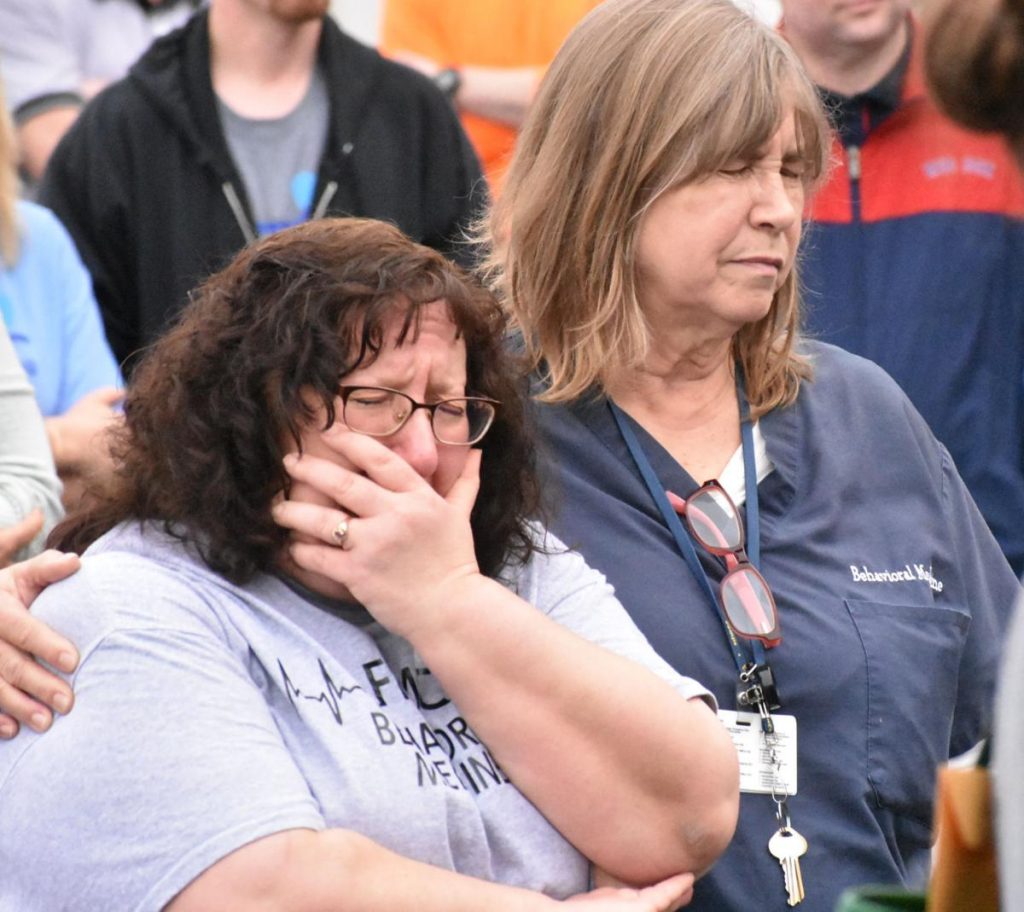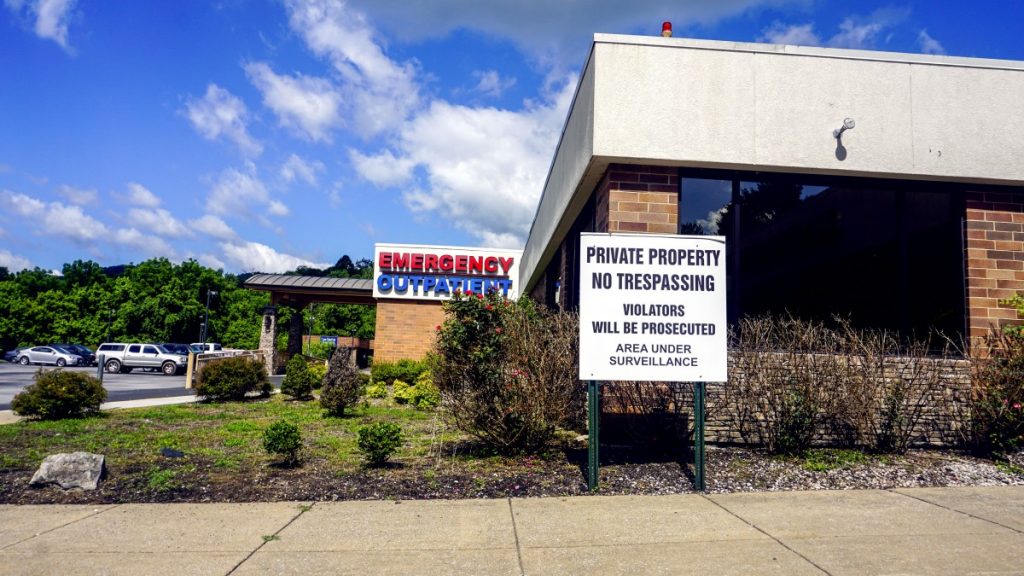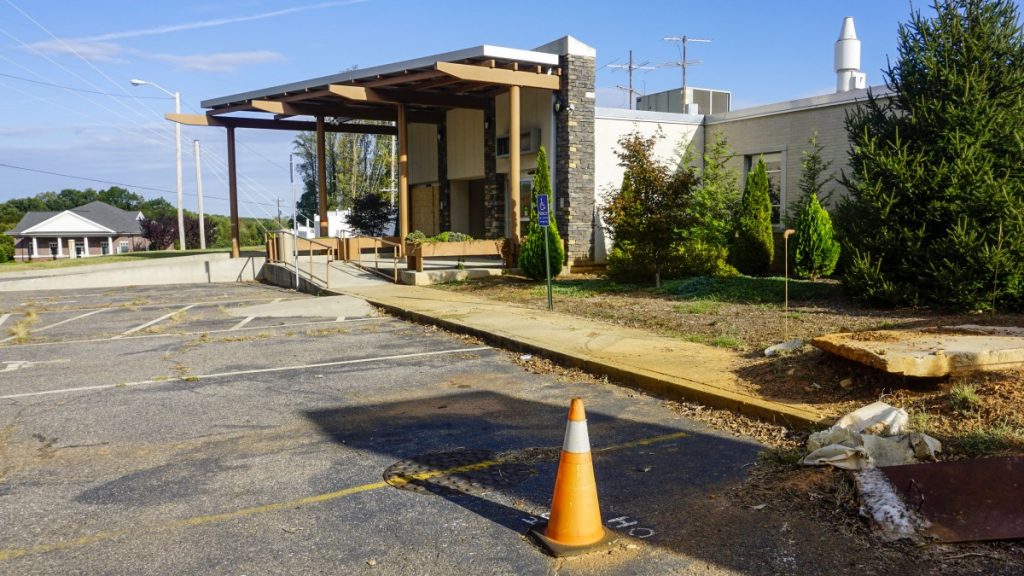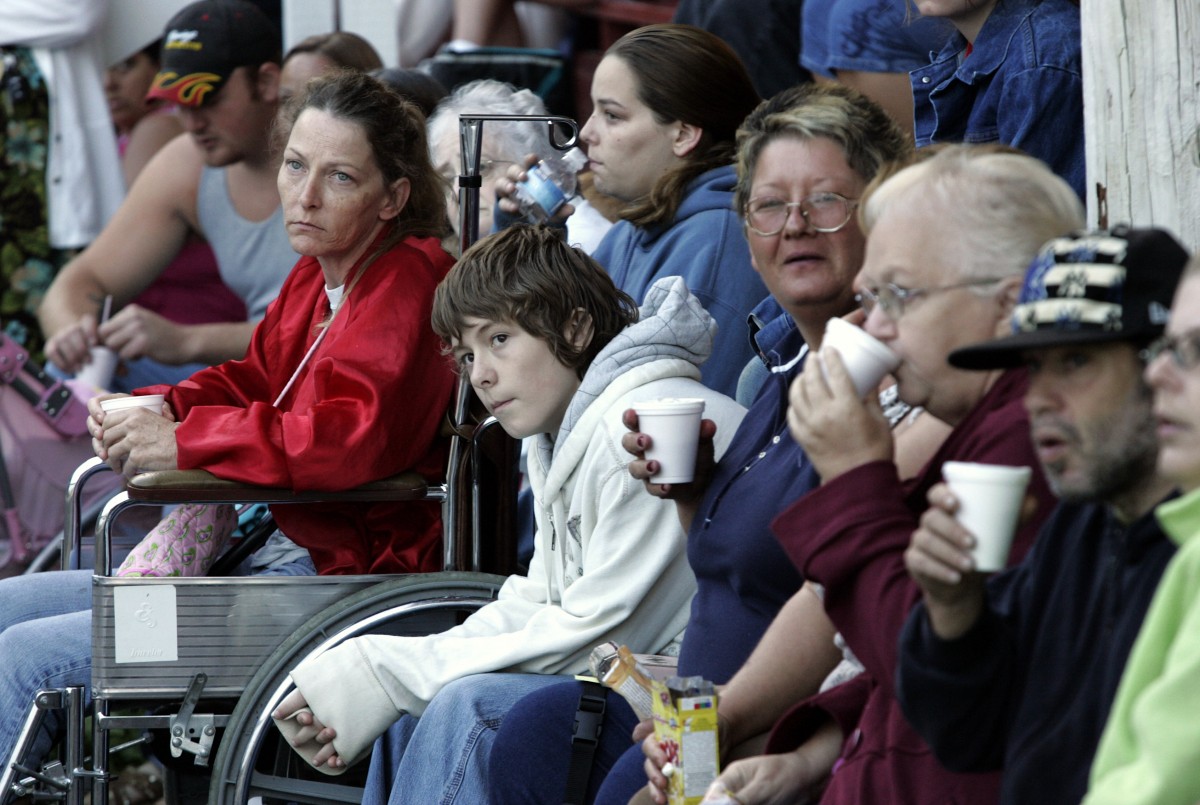During the third week of March, as the first positive tests for the novel coronavirus, or COVID-19, were announced in West Virginia, Fairmont Regional Medical Center permanently closed amid financial troubles and no success in finding a new buyer.
The 207 bed acute care facility was the only hospital in Marion County, West Virginia, employing more than 500 workers. Now, residents have to travel about 20 minutes south or nearly 40 minutes north to reach the closest hospital.
U.S. Sen. Joe Manchin, who grew up just outside of Fairmont, lamented its loss.
“Our state, nation and world are facing an unprecedented pandemic in the wake of the COVID-19 virus outbreak and the closing of FRMC only creates additional uncertainty,” Manchin said.
Alecto Healthcare Services, the company that owned Fairmont Regional Medical Center, previously closed hospitals in Wheeling, West Virginia, and Martins Ferry, Ohio.

In a statement released when the Fairmont closing was first announced more than a year ago, Alecto blamed a range of factors, including, “difficulties recruiting physicians, vigorous competition from larger health systems for patients and physicians, declining patient volumes, the inability to qualify as a critical access hospital or sole community hospital (and the increased reimbursement from Medicare that comes along with such designations) due to its geographic location and the geographic location of other hospitals, decreasing reimbursement from all payors, increasing operating costs, and a physical plant that has required improvements as it has aged.”
Similar factors have gutted rural America’s healthcare providers, which now face the loss of further revenue as they freeze non-emergency procedures and a raft of new costs as they prepare for a potential surge in patients, many of which have factors putting them at higher risk for COVID-19, and deal with a national shortage of medical personnel, equipment and supplies.
Rural hospitals across Appalachia and America are hemorrhaging money. The NC Rural Health Research Program at the Cecil G. Sheps Center for Health Services Research lists 168 hospitals that have closed since 2005, and 126 since 2010, not counting Fairmont. Of those, 28 of them, or 17 percent, were in the Appalachian region.
Data: NC Rural Health Research Program Graphic: David Smith/100 Days in Appalachia
“Those closures are basically the after-effect of now 47 percent of rural hospitals operating at a losing margin,” said Brock Slabach, senior vice president for member services at the National Rural Health Association. “On operations, they’re losing money.”
And that was before the COVID-19 pandemic.
“It’s taking a fractured system and opening that fracture even wider,” Slabach said. “Rural health infrastructure has been fractured over a period of a long time. This is going to sever that even further and will be shining a spotlight to deficits we have not paid attention to.”
Rural Appalachian hospitals are now taking new hits as they prepare for a potential surge of patients among a population that is significantly at-risk for coronavirus. People in Appalachia and rural America generally tend to be older, and they tend to have higher rates of chronic conditions such as diabetes, hypertension and — in coal-producing regions — black lung disease.
“Because this disease particularly impacts the elderly and the sicker harder, I would suspect that by this measure, the case fatality rate in a rural community could be a lot higher per capita,” Slabach said.
But COVID-19 cases have only just begun to ramp up in Appalachia — determining an accurate number is impossible given the scarcity of tests — and in the meantime, the Centers for Medicare & Medicaid Services (CMS) announced that all non-essential medical, surgical and dental procedures will be delayed. The freeze on non-emergency procedures has put the pinch on rural hospitals that were already running on tight operating margins.
“You don’t want patients, especially those who are elderly and with chronic conditions, going to hospitals and increasing their risk of contracting the virus,” Slabach said. “This is a form of social distancing. But it’s directly impacting the operation of our hospitals because they’re sitting relatively empty.
“I’m dealing minute-by-minute with emails and phone calls from anxious CEOs worried about their cash flow since they’ve pretty much emptied their hospitals from elective and non-emergency services, and now they’re sitting there with empty facilities and no patients.”
Wavering Revenues in the Wake of Restrictions

Ballad Health emerged from the consolidation of two, previously competing but failing hospital systems that cover northeastern Tennessee and southwestern Virginia. A hospital in Lee County, Virginia, operated by Wellmont Health Systems— which later consolidated with Mountain States Health Alliance to form Ballad— closed in 2013. Ballad has reopened it as an urgent care center and plans to expand the facility as a small critical access hospital later this year. Lee County saw its first two confirmed cases of COVID-19 on Saturday. Ballad has also closed two hospitals in Greeneville, Tennessee, and Norton, Virginia, both of which had competing Wellmont and Mountain States hospitals; in both cases, Ballad has converted those former hospitals for other services.
The consolidation of two competing hospital systems gave Ballad Health a monopoly over hospitals in its service area, as well as the ability to rework its service offerings for more efficiency. Those changes have caused consternation and anxiety in Ballad’s coverage area, but they’ve also allowed the non-profit healthcare provider to shore up its operating margins.
Even so, the CMS prohibition of non-emergency procedures has hit Ballad Health hard.
“We’ve seen a 50 percent drop in outpatient procedures, which is the majority of our revenue in Ballad Health,” Anthony Keck, Ballad’s executive vice president for system innovation and chief population health officer, said. “Every other health system is experiencing the same type of drop. As a system with a mix of bigger, medium and smaller hospitals, we up until two weeks ago had 250 days of cash on hand. In the past two weeks, we’ve lost 40 days of cash, which equates to $100 million. That’s largely from [drops in] the stock market.”
The future looks even more bleak.
“With the decrease in outpatient procedures and non-emergent procedures, we’re estimating losing another $100 million over the next 90 days,” Keck said. “We are in a pretty good position with cash and most likely are going to be able to weather the storm. I know a lot of these other small independent hospitals have three to four days of cash on hand, or maybe 10 days. This means trouble for the entire healthcare industry. It’s going to be very, very difficult for independent rural hospitals to weather the storm without outside help.”
‘We’re Going to Need Some Help Down the Road’
Western North Carolina’s Appalachian Regional Health Systems is one of those independent rural hospital systems. Covering Ashe, Avery and Watauga counties, ARHS includes 14 physician practices and two hospitals, having closed a third — Blowing Rock Hospital — in 2013 because it was six miles from another hospital.
“Financial concerns are certainly there for us right now, but we have more important things to deal with,” said Rob Hudspeth, ARHS’s senior vice president of system advancement. “Our position has been that this is a public health crisis and we’re largely responsible for helping those patients. Right now our efforts are all into making sure we address the health crisis.”
But although the ARHS is focusing its efforts on preparing for COVID-19 beyond the two patients who tested positive last week in Watauga County (still none in Ashe or Avery counties), it and other rural health systems do have concerns about financial stability over the long term.
“We want to remain calm and ensure people we can take care of them when the need arises,” Hudspeth said. “But we’re going to need some help down the road. Long after we get through this pandemic, we’ll feel the effects of this. Our hope is there’s some legislation to help us more immediately, and then longer term with reimbursements for Medicaid, Medicare and personal insurance. With rural healthcare, it’s often the matter of a small amount of money that puts you in the red or black. Something like this is very concerning for us down the road.”

Despite its smaller size, ARHS is using similar protocols as Ballad Health. It is using a multidisciplinary, incident management team to coordinate with state and federal agencies and make policy decisions as the situation evolves. ARHS also has set up a tele-health triage system, in which a patient goes through an initial telehealth screening with a physician via a phone, laptop, or computer. If the physician determines the patient needs to be screened more thoroughly, they write an order to set an appointment at one of two testing sites in Avery and Watauga counties.
“You go to that test site and sit in your car,” Hudspeth said. “They come out and do first a flu test and then a COVID-19 test. The patient then becomes a person under investigation as part of the CDC algorithm.”
Shortages Amind Uncertainty
At the same time hospitals are struggling to keep financially afloat, they’re also trying to prepare for COVID-19— a process that includes numerous unknown variables. Hospitals don’t know how many patients to realistically expect, nor do they know how severe the cases will be.
Many are struggling with shortages of doctors and nurses, but also of supplies. Ballad Health has the option to divert resources to specific facilities within its system, but smaller providers don’t have that option. Because the pandemic is expected to unfold at different rates in different regions — varying both on exposure and how well residents have practiced social distancing — few know what to expect.
“What rural hospital CEOs are facing right now is the unknown,” said Slabach, of the National Rural Health Association. “There’s a certain point at which a surge could happen that could overwhelm any facility based on its relative size. What could happen if their community becomes epidemic with infection and they start seeing lots of presentation of the disease? How will they be able to allocate resources accordingly is a real question because many rural hospitals may have one, possibly two ventilators. Normally we could refer patients to another facility, but the reality will be that our referral sources will likely be overwhelmed as well.”
Rural hospitals are also struggling with workforce staffing, facing shortages of medical personnel even as the demand for them ramps up. They face shortfalls of hospital beds, particularly in communities that have seen hospital closures. The industry already is seeking stock-outs on certain medications and IV drugs and is working to bolster its supply chains. The same goes for personal protective equipment that’s necessary to keep doctors and nurses on the front lines safe from infection themselves.
Hudspeth said ARHS invested in some new equipment as the pandemic began to build, and ongoing conversations with state agencies and associations have resulted in linking up with regional supply warehouses to shore up its supplies. But the relatively small number of tests, as well as the lag time in getting results, are creating a lot of uncertainty.
“I can say very specifically, one of the challenges for us right now is related to the delay in getting results of those tests,” Hudspeth said. “Currently, we don’t have any patients in-house that have COVID-19. As we get those patients in-house, they have to be treated every day for a potentially lengthy period. The use of PPE [personal protective equipment] really becomes a concern. When one person becomes five people and five become 10 and 10 becomes 100, and you have to re-dress between each room, that becomes a real concern.”
Then there’s a fundamental underlying question as the pandemic continues to develop: How can hospitals afford to pay for all this?
Slabach said the industry is seeking to answer that in the short term by backing provisions in federal stimulus and bailout packages that would cover costs for the surge at hospitals around America.
Longer term, elected representatives and policy makers may need to rethink the healthcare sector in a much more fundamental way, Slabach said.
“I think we’re going to see the value of local health care,” Slabach said. “We’re going to need to reform the payment structures for rural hospitals, rural health clinics and federally qualified health centers. There’s an investment that has to be made that’s not always showing up in a balance sheet or income statement. We have got to move away from the notion of healthcare as some sort of business, and look at it now more as a utility like fire, water and police services. I’d also put first responders out there, because communities are doing the best they can, but the funding mechanism is very spotty. We’re going to have to look at these as utilities, and public policy is going to have to recognize them as such.”
So while coronavirus will test rural healthcare infrastructure as never before, the pandemic may well ultimately have a much longer-term effect that prompts meaningful policy changes that affect how residents of Appalachia and other rural places access medical services.



